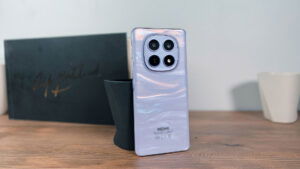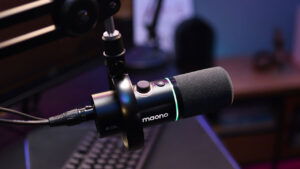The Lenovo Legion Go 2 is the next iteration of the well-received Legion Go. Built with the same unique design philosophy as its predecessor, the Legion Go 2 attempts to skate the line between handheld PC and Portable console. With an updated processor, GPU and RAM, Lenovo has worked to refine the overall user experience while carrying over many of the features that made the Legion Go such a charming and unique handheld.
Side by side, there are some striking similarities in the design. Returning are the detachable controllers, 8.8-inch OLED display (with a slightly different resolution) and the kickstand that were iconic elements of the original Go. While similar in size, this latest iteration is slightly more compact, measuring 11.64 by 5.38 by 1.66 inches, and slightly heavier, weighing 2.03 pounds with the controllers attached. In hand, the Legion Go 2, like its predecessor, is one of the larger handhelds I have worked with.
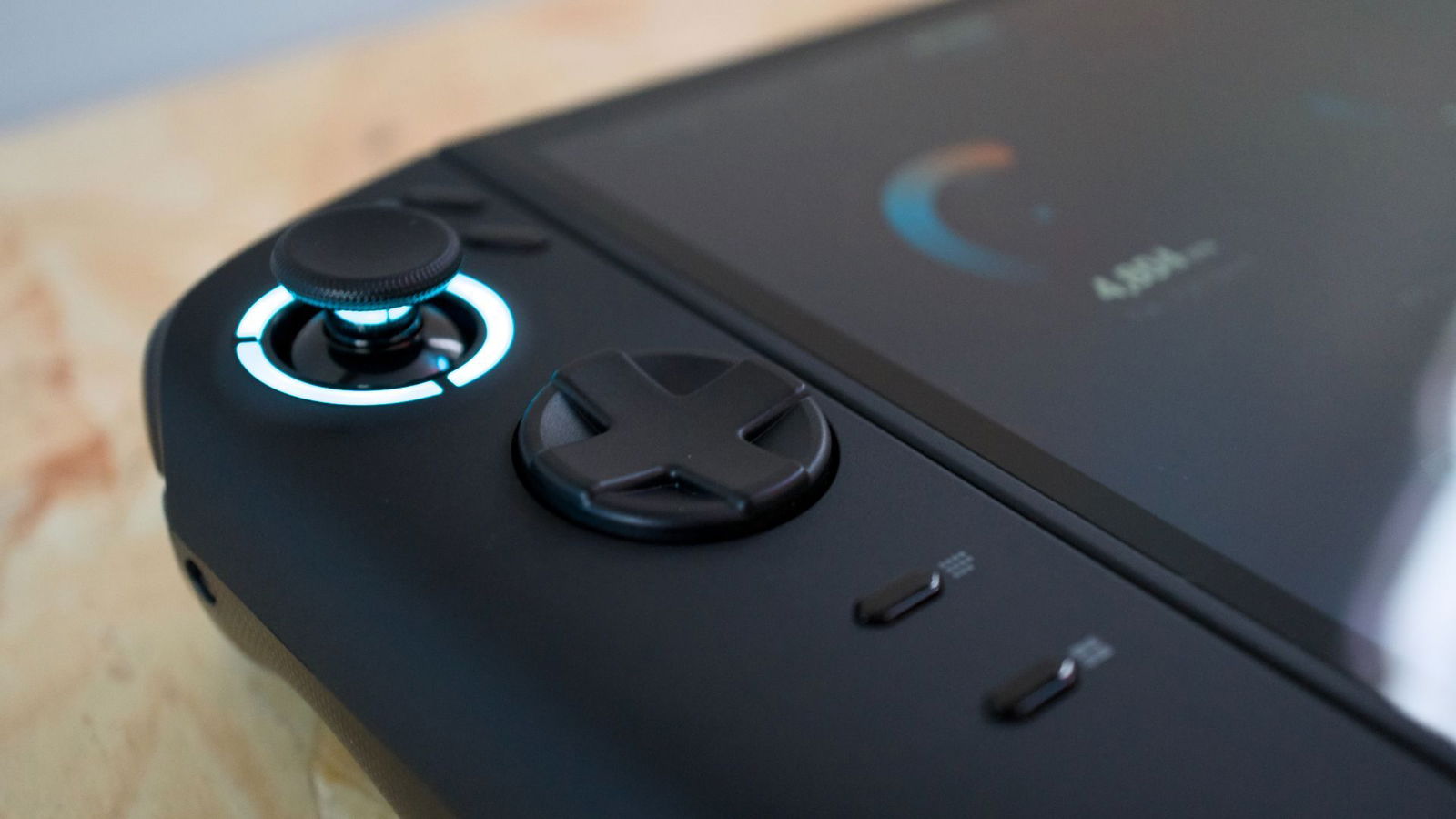
While the size and weight might feel a bit greater than those of other handheld PCs, the 8.8-inch OLED display is wonderful to play on. Interestingly, while both the original and latest iterations of the Legion feature an 8.8-inch OLED panel, the Legion Go 2 display has a lower pixel density, at 1,920 by 1,200, down from the original’s 2,560 by 1,600. Having now spent a few weeks using the Legion Go 2, this seems like a wise choice. It enables better performance on a display size that does not significantly benefit from a higher pixel count.
“Games still look absolutely gorgeous on the Legion Go 2’s 144Hz display.”
Games still look absolutely gorgeous on the Legion Go 2’s 144Hz display. With full HDR support and a peak brightness of 1100 nits, gaming in most spaces won’t be a problem. Even in exceptionally bright spaces, I had no issue seeing games with the Legion Go 2. Even dark and poorly lit locations in titles like DOOM: The Dark Ages or CyberPunk 2077 were crisp, clear and visible.
Holding and using the Legion Go 2 feels quite similar to its predecessor, with a few notable differences. For starters, the Go 2 features more rounded edges that feel much more comfortable in hand. While they are comparable in size, the Go 2 also has textured hand grips, a welcome addition to the original design. The Hall effect joysticks are quick and responsive, the face buttons and bumpers feel great to use, and the included touchpad is useful for navigating Windows 11 if you prefer not to use the touchscreen.

The included I/O is also similar to the original. A microSD card reader allows gamers to expand on the included 1-terabyte internal SSD. A combination headphone and microphone port allows for easy connection of a gaming headset, and two USB 4 ports allow for both charging and HDMI through a USB-C adaptor. It is a solid offering of I/O, with the only real critique being the location of the second USB 4 port. Located at the bottom, it forces the user to lay the unit flat if they wish to use one port for charging and the other for HDMI out.
Functionally, the Go 2 handles very similarly to the original Legion Go. This isn’t a complaint by any stretch, as its larger size does mean that the included detachable controllers feel similar to holding a traditional controller. Handheld mode feels great, though I will confess that after a few hours of gaming, it can feel a bit heavy.
Thankfully, the aforementioned detachable controllers resolve this issue. When detached, the controllers can be slotted into an accessory (sold separately) that turns them into a functional, single controller. This, coupled with the exceptional kickstand located on the back of the unit, makes it an ideal setup for a more traditional console experience.

For those looking to take things to the next level, the Legion Go 2, thanks to the USB 4 ports, can be connected to a docking station and bring the full force of a PC gaming experience to bear. Using Razer’s Thunderbolt 5 Dock Chroma, I was able to connect the Go 2 to my 4K monitor, mouse and keyboard and set up a traditional gaming station. While it doesn’t quite replace a full gaming laptop experience, it i still nonetheless a fun way to leverage the Legion Go 2 while at home.
“The Lenovo Legion Go 2 attempts to skate the line between handheld PC and portable console.”
There is another mode available on the Legion Go 2 called FPS mode. In theory, the right controller, thanks to an included glide mount accessory, turns into what is essentially a vertical mouse, while the other acts as a movement controller for FPS gameplay. Using this hybrid style of play, gamers can get closer to the precision of mouse aiming without the need for additional peripherals.
In practice, while it does work, I struggled to utilize it to the degree that it’s intended. I’ve used vertical mice before, but the FPS mode doesn’t quite translate, at least in my experience. While some will most likely find it functional for shooters, I simply couldn’t get the hang of it. It’s an interesting concept that was first introduced on the original Go that I still struggle to master.

While there are some subtle differences in design, the overall look and feel of the Legion Go 2 is similar to its predecessor. It’s a bit heavy but still comfortable to handle, and its ability to transform to various settings makes it one of the more unique handhelds currently on the market. However, all of this, for the most part, is simply a refinement of what was already great about the Legion Go line.
Where The Legion Go 2 makes real strides forward is in its hardware and software refinement. The Go 2 includes the new AMD Ryzen Z2 Extreme processor, a fairly large step up from the Legion Go’s Z1 Extreme. The GPU has also seen a welcome update in the form of the AMD Radeon RDNA 3.5 graphics card. RAM has also seen a boost with 32GB of LPDDR5x-8000 (double that of the Legion Go. When all packed together, the result is a significant performance boost.
Titles such as Cyberpunk 2077 and Indiana Jones and the Great Circle can easily maintain 45-60 FPS at higher settings. Performance across the board is improved on every title I tested. DOOM: The Dark Ages ran well at full resolution, and Hogwarts Legacy was able to maintain a solid 45-55 frames in the open world areas. It’s the first handheld I’ve used where I feel I could confidently run any modern title at a playable rate and possibly even leave my gaming laptop behind when travelling.
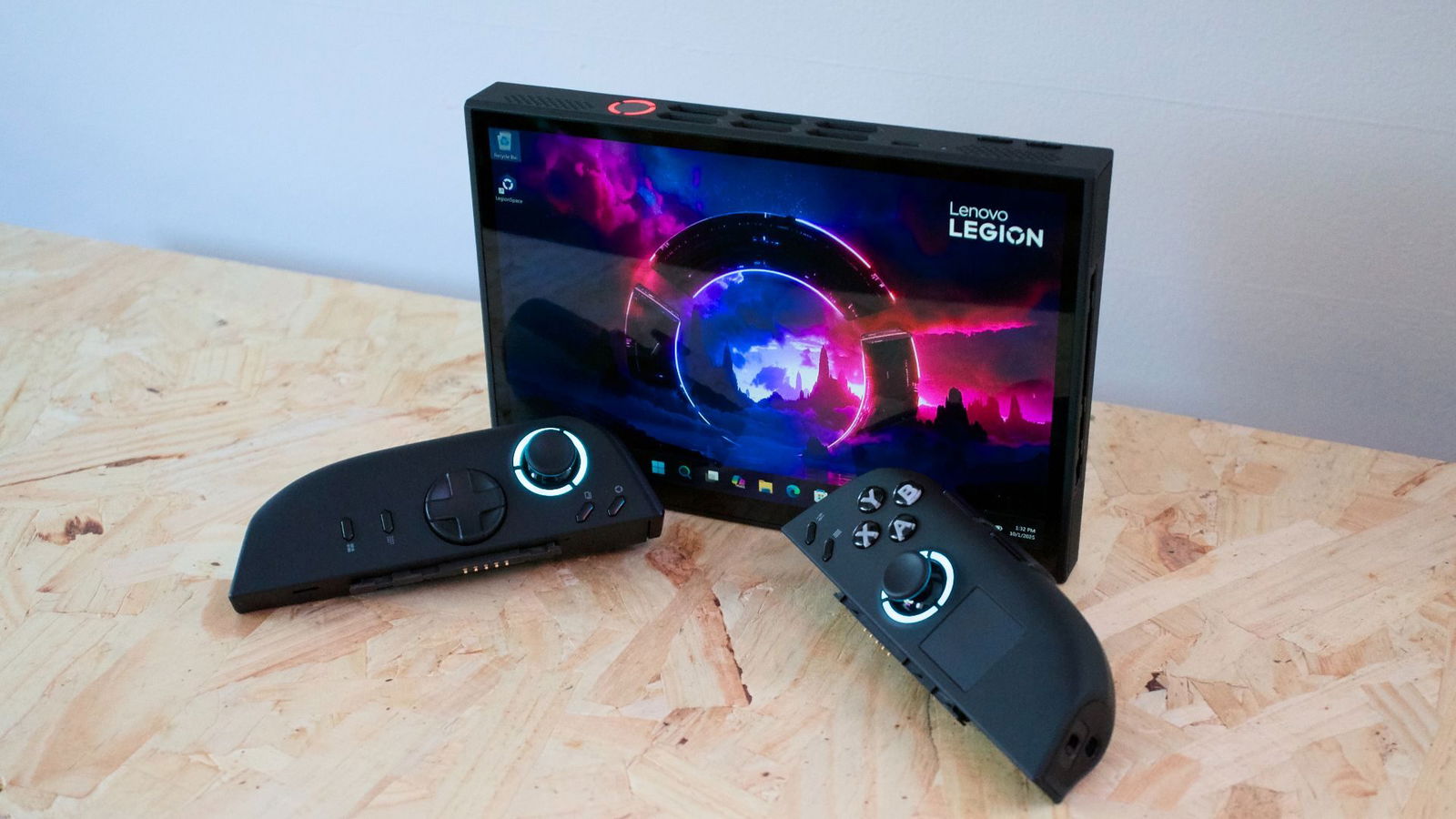
While the hardware plays a significant part in this performance boost, the refinement to frame generation, as well as more titles actively supporting handheld modes, help push the limits of what handheld PC’s can manage. Even Windows 11 seems to run smoother and with fewer bugs than it did when I reviewed both the Legion Go and Legion Go S. The overall user experience is simply better, with LegionSpace acting as an all-in-one center for launch titles and managing system settings.
“While the price might be tough for some to justify, if you are in the market for a top-tier handheld PC, the Lenovo Legion Go 2 is a top contender for best in class.”
On that note, I’ve appreciated the Legion Go 2’s ability to hot switch system settings even while in-game. By accessing the Quick Settings sidebar menu via the Legion R button, gamers and easily adjust anything from resolution to thermal settings on the fly. This allows for quick changes to boost performance without ever leaving a game. It’s a returning feature, but one that brings huge quality of life to the user experience.
Thermals on the Legion Go 2 also seem to be more refined over the original Legion Go. All venting is directed through the top of the unit away from any part of the Go 2 that you would hold. As a result, the unit remains quite cool, even during long play sessions. The air intakes are also located on the upper rear panel, tucked between the two controllers. This helps ensure there is always a clear path for air to flow into the unit. While there are several cooling profiles, I found it best to run the Go 2 in performance mode as the fans were impressively quiet even when the unit was under load.
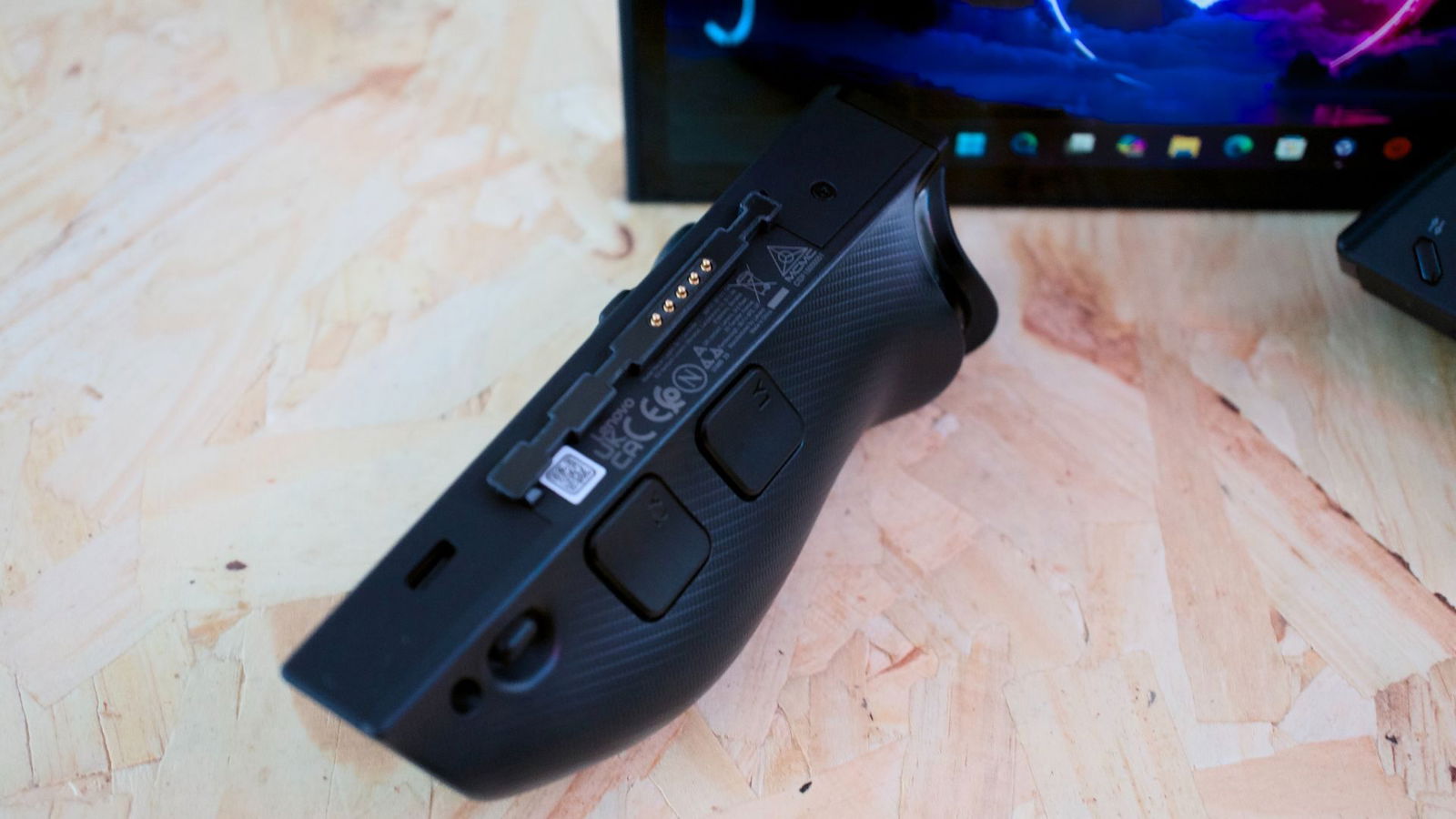
Battery life has seen an improvement over the original Legion Go with a larger 74Wh battery that supports rapid charge, a welcome quality of life improvement. While the play time will vary for users based on title, resolution and thermal mode, I managed over 4 hours of DOOM: The Dark Ages, though I did run it in power saving mode once the battery dipped below 50 percent. While battery life is an area that all handhelds will continue to refine, I have been impressed by the increase in battery life with this latest iteration of the Legion Go.
With all this being said, there is still the question of price. At $1,349.99, the Legion Go 2 is creeping up into the realm of 5060 series gaming laptops. This raises a key question: Is it better to simply purchase a 5060 series gaming laptop? It’s not a simple answer.
I do think there’s a case for the Legion Go 2. If you are specifically looking to replace your gaming laptop with a more portable and arguably more flexible gaming option, the Legion Go 2 is one of the most powerful handhelds I’ve worked with. It offers some impressive performance, allowing for the playing of most modern titles. When in console mode, you can even connect a mouse and keyboard, allowing you to play titles that require these peripherals to function. In the world of handheld PC’s, Lenovo has created one of the best in the form of the Legion Go 2.

However, I do wonder if, by dropping the price point down a few hundred dollars, they wouldn’t have made a more enticing offering. While the portability and performance are impressive, at almost $1,400, I would venture to guess that many gamers would lean more towards a compact 14-inch RTX 50 series laptop for a few hundred dollars more. Ultimately, the Legion Go 2 is a great handheld PC, arguably one of the best that might be hamstrung by its own price point.
Lenovo has done a great job with the latest iteration of the Legion Go line. The Legion Go 2 is an excellent product that carries over many of the features that make this handheld PC great and improves on performance and battery life in all the right ways. While the price might be tough for some to justify, if you are in the market for a top-tier handheld PC, the Lenovo Legion Go 2 is a top contender for best in class.
- MAX POWER, YOUR RULES – Play your way with the Lenovo Legion Go 2. Powered by an AMD Ryzen Z2 processor, a vibrant 8.8″ 144Hz Lenovo PureSight OLED gaming display, and a massive 74Whr battery, it’s built to push further, game longer, and stay unplugged.
- MAX COOLING, MANUAL CONTROL – The Legion Coldfront thermal system is built to handle serious heat. Increased radiators and fan blade’s surface area improves the airflow without increasing the noise. Upgraded dual heat pipes distribute heat more efficiently to keep your rig powerful and precise.





